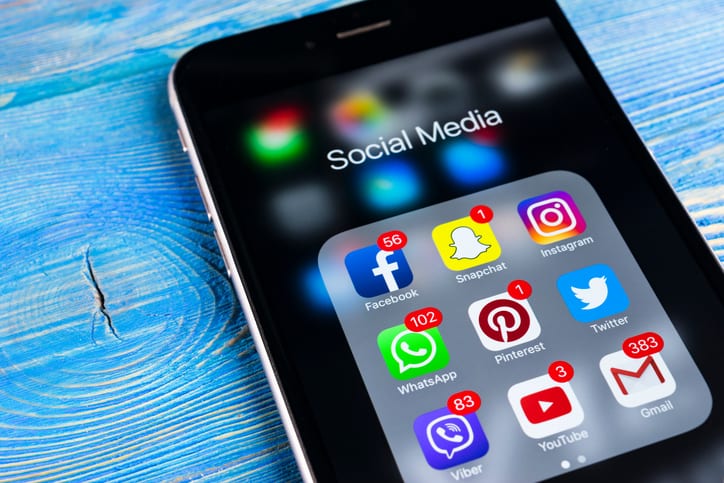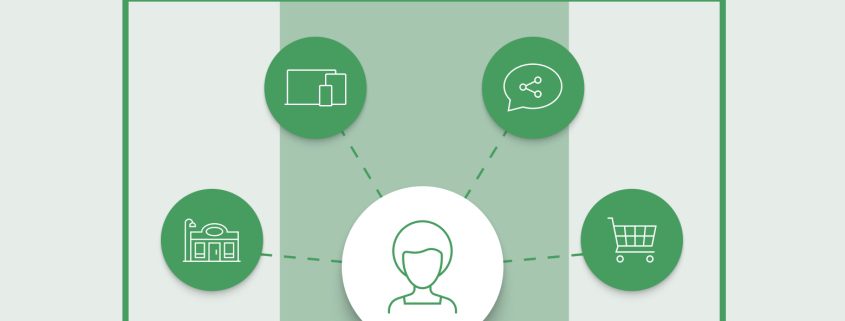As customers become more connected, their expectations for a seamless and personalized experience continue to change. Nowadays, customers use multiple channels to research, compare, and purchase different products, creating a complex web of touchpoints that businesses must navigate. That’s where omnichannel personalization comes in to help businesses deliver unique experiences to each customer, regardless of where they are in their customer journeys.
In the sections below, you’ll learn more about omnichannel marketing and personalization, including tips for creating a seamless customer experience that drives loyalty and revenue.
Understanding Omnichannel Personalization
Omnichannel personalization is a customer-centric marketing approach that uses data and technology to create a more personalized and relevant shopping experience for customers. It involves collecting and analyzing data from multiple channels, including online and offline interactions, to gain insights into customer behavior and preferences.
This marketing approach enables businesses to create a consistent customer journey that meets varied and unique customer expectations. By providing a more personalized experience, businesses can increase customer loyalty, reduce churn, and drive more revenue.
What Makes Up Omnichannel Marketing and Personalization
Over the years, disruptive technologies such as Machine Learning, big data, and data science have given rise to hyper-personalization. Here, businesses are expected to deliver cross-channel experiences tailored to the customers’ needs, behaviors, and preferences. Below are the key factors you should implement if you are looking to provide the best possible customer experience.
1. Marketing Automation
Marketing automation involves using software to automate repetitive tasks such as social media posting and email marketing. It saves time and helps provide a more personalized experience for customers. Benefits of marketing automation include increased sales productivity and a reduction in marketing overhead.
Companies using marketing automation to nurture prospects see a significant increase in qualified leads, which results in larger purchases. A survey by Annuitas Group found that businesses that use marketing automation see up to a 451% increase in qualified leads. These leads also make purchases that are 47% larger than the non-nurtured leads.
2. Customer Data Collection
Collecting relevant customer data is crucial to refining your marketing strategy and improving the customer experience. This data can be quantitative, like website bounce rates, or qualitative, like customer reviews. With the right analytics tools, you can gather information about demographics, customer behavior, and brand sentiment.
Customer data collection helps retailers better understand their customers and provide an omnichannel experience. To do this effectively, you need a robust customer data platform to gather, store, and analyze the available data.
3. Optimized Website Design
When optimizing your website design, you should create web pages that work well on mobile devices, tablets, and desktops. If your website isn’t responsive, it won’t display properly on smaller screens. Always ensure that your website provides a consistent experience to every customer, regardless of which device they use to view it. You should also prioritize website navigation design to ensure users can easily browse your website, find what they’re looking for, and easily make purchases.
As the name suggests, social media integration extends your marketing efforts by directing your social media followers to your website or app. It’s also a way of making your social platforms more accessible to your target audience and customers. Brands must integrate all their customers’ social media networks into their omnichannel setup.
Ecommerce brands, for instance, can use social media integration tools to import and display user-generated content on their ecommerce sites automatically. This can help build trust with potential customers and drive conversions.
5. Multichannel Analytics
Multichannel analytics is a process that merges data from different sources into a single location. This makes it easier for businesses to monitor sales across multiple channels. For instance, if a business owner owns three online stores, they can aggregate the data from each store into one location with the help of multichannel analytic tools.
By doing so, they can understand their customers and their behavior on the website, which can help them plan effective promotion campaigns that are more likely to convert. Multichannel analytics also allows businesses to track the effectiveness of their omnichannel marketing strategy, so they can optimize performance while reducing cost.
Benefits of Omnichannel Personalization
Personalizing customer experiences and prioritizing their needs and expectations can greatly impact your business. Below are some of the key benefits of embracing a customer-centric marketing approach.
1. Enhanced Customer Experience
Omnichannel marketing enables businesses to offer customers personalized experiences tailored to their preferences and behaviors. By leveraging data from multiple touchpoints, brands can send customized messages, showcase relevant products, and provide exceptional customer service. A seamless and personalized experience boosts customer satisfaction and improves loyalty.
2. Increased Sales and Conversions
Personalized customer experiences increase the likelihood of converting prospects by providing relevant and timely interactions. By catering to each customer’s unique preferences, businesses can improve the customer journey and encourage purchases. Omnichannel marketing and personalization have been shown to increase annual sales and customer lifetime value, directly boosting business growth.
3. Lower Customer Acquisition Costs
Creating a personalized omnichannel experience helps retain customers and reduces customer acquisition costs. By providing relevant interactions, businesses can increase customer loyalty and target their advertising spending more efficiently. This approach helps companies optimize their marketing budget and reduce the cost of acquiring new customers.
4. Cost Optimization 
By analyzing customer behavior data, brands can identify the most effective channels to reach their target audience. With this knowledge, businesses can optimize their marketing stack, streamline processes, and reduce costs associated with operating multiple channels. Omnichannel personalization helps to optimize resources, reduce waste, and ensure efficient use of budgets while delivering a seamless customer experience.
Getting Started With Omnichannel Personalization
Implementing an omnichannel marketing strategy is a complex process requiring technological and organizational alignment. To get started, you need to get buy-in from top management, set measurable goals, and build a strategy around those goals. You should also conduct a data inventory to understand the available data and how to use it to achieve your objectives. Additionally, it’s important to establish an internal governance model for executing your omnichannel strategy before creating a roadmap.
To simplify the implementation process, you can start small by focusing on the most valuable use cases and existing touchpoints. This approach is more practical and essential as the boundaries between the digital and physical worlds continue to merge. By taking small, manageable steps towards omnichannel personalization, you can gain a competitive edge and improve customer experience across all touchpoints.



 Optimize For Mobile Use:
Optimize For Mobile Use:



















